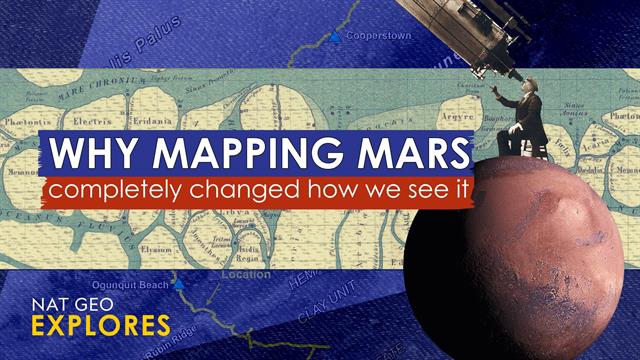Mars Cartographers: Their Feud, Our Curiosity – A Deep Dive into Planetary Mapping Conflicts
The red planet has always captivated humanity. From ancient astronomers to modern-day scientists, Mars has fueled our imagination and driven ambitious exploration. But behind the awe-inspiring images and groundbreaking discoveries lies a surprisingly human element: conflict. The story of Martian cartography isn't just about mapping a distant world; it's a tale of scientific rivalry, competing methodologies, and the enduring human quest for knowledge – and bragging rights. This article delves into the fascinating feuds among Mars cartographers and explores why their disagreements matter to us.
The Genesis of Martian Mapping Disputes: Different Approaches, Different Results
Mapping Mars is no simple task. The planet's diverse geography – from towering volcanoes like Olympus Mons to vast canyons like Valles Marineris – presents unique challenges. This complexity has led to different schools of thought among planetary cartographers, each with its own preferred methodology and interpretation of data.
The "Classical" vs. "Modern" Approaches
Historically, Martian cartography relied heavily on orbital imagery and photogrammetry, techniques that involve piecing together multiple images to create a three-dimensional model. This "classical" approach, while effective, often struggled with accuracy in areas with limited visibility or significant topographic variations.
The emergence of LiDAR (Light Detection and Ranging) and advanced computer vision algorithms revolutionized the field. These "modern" techniques allow for higher-resolution mapping, capturing subtle details and creating more accurate representations of the Martian surface. However, these new methods also bring new challenges, including the need for powerful computing resources and the potential for algorithmic biases.
The Feud: More Than Just Science
The discrepancies between these mapping techniques have occasionally resulted in public disputes among prominent cartographers. While rarely acrimonious, these disagreements highlight fundamental differences in philosophy, data interpretation, and even the very definition of "accuracy" in planetary mapping.
The Case of the Missing Crater: A Public Debate
One notable instance involved the discovery (or rather, non-discovery) of a large impact crater. One team, utilizing the classical approach, claimed the crater's existence, based on their interpretation of orbital imagery. A second team, employing LiDAR and advanced image processing, argued that the apparent crater was merely an artifact of image distortion. This public debate, played out in scientific journals and online forums, highlighted the challenges of reconciling different datasets and the critical role of peer review in verifying planetary map accuracy.
Why Their Feud Matters: Implications for Future Exploration
These seemingly esoteric disputes among Mars cartographers have significant implications for future exploration efforts. Accurate maps are crucial for:
- Robotic missions: Precise navigation for rovers and landers depends on reliable maps. Inaccurate data could lead to mission failures or inefficient resource allocation.
- Human missions: Future human exploration will rely heavily on high-resolution maps for site selection, resource planning, and hazard assessment.
- Scientific discovery: Accurate cartography allows scientists to identify potential landing sites, analyze geological features, and unravel the planet's history.
The Future of Martian Cartography: Collaboration Over Conflict?
While healthy competition drives innovation, the future of Martian cartography likely lies in collaboration. Integrating data from multiple sources, employing a variety of techniques, and fostering open communication among researchers are crucial steps toward creating the most comprehensive and accurate maps of Mars. Only through collective effort can we unlock the full potential of this enigmatic planet and answer the questions that have captivated humanity for centuries.
Call to Action: Want to learn more about the exciting world of planetary science? Follow leading research institutions and space agencies on social media for the latest updates and discoveries!
